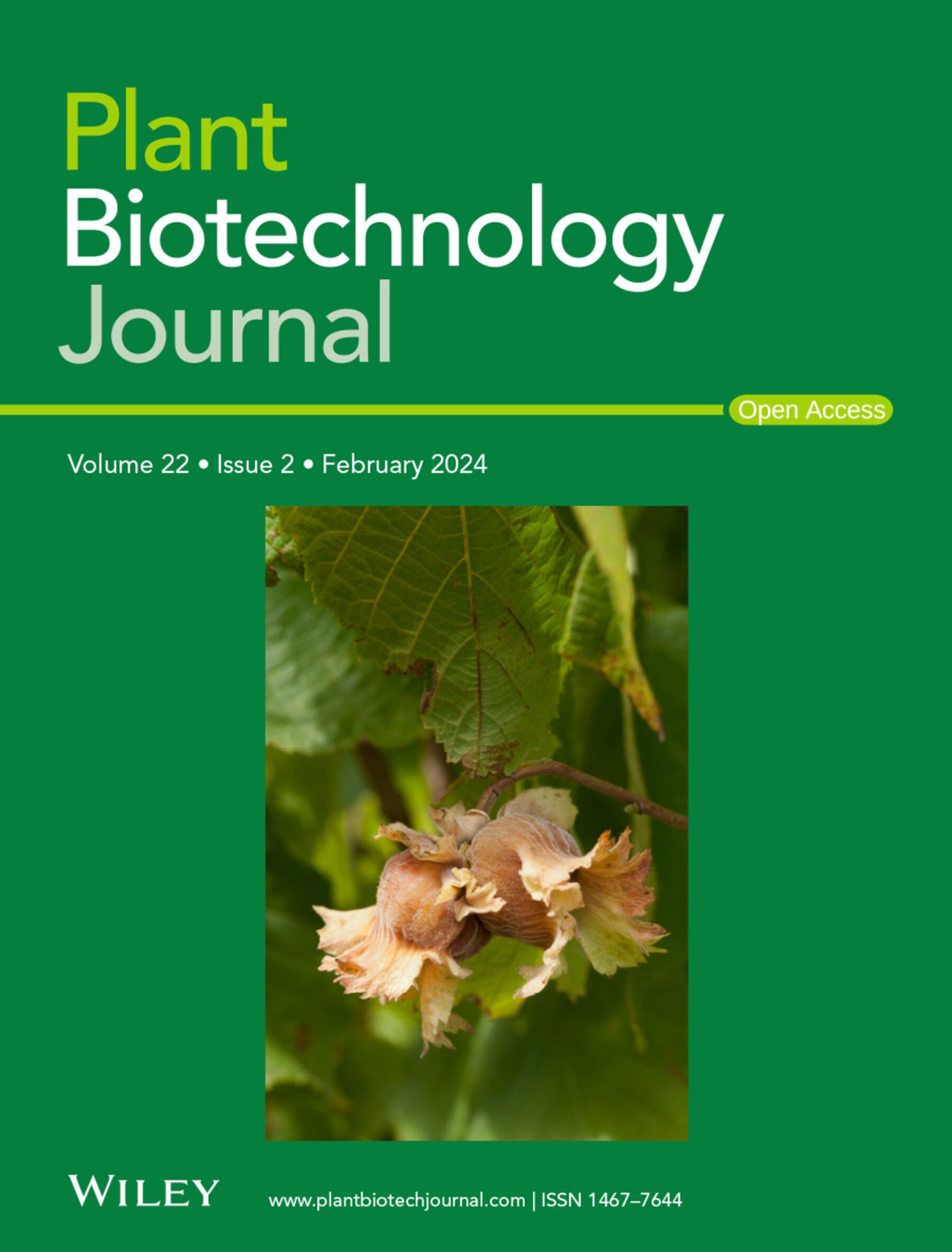Replacement of large subunit N terminus enabled biogenesis of different plant Rubiscos in E. coli
IF 10.1
1区 生物学
Q1 BIOTECHNOLOGY & APPLIED MICROBIOLOGY
引用次数: 0
Abstract
The efforts of engineering plant ribulose-1,5-bisphosphate carboxylase/oxygenase (Rubisco) with the goal of improving plant photosynthetic efficiency and crop yield have existed for long. However, the directed evolution of plant Rubisco has not been widely explored because its biogenesis in a heterologous host such as Escherichia coli remains challenging. Recent breakthroughs in developing the Arabidopsis five-auxiliary-chaperone package and optimizing the chaperone origins have enabled the functional assembly of several plant Rubisco large subunits with their native or other plant small subunits in E. coli. But tedious and unpredictable optimization of chaperone origins might still be required for the assembly of another plant Rubisco. Here, we identified several residues at the N terminus of the large subunit that were critical for Rubisco assembly in E. coli by comparative sequential and structural analysis of cyanobacterial and plant Rubiscos. These residues in cyanobacterial Rubisco showed intensive molecular interactions with other residues within this and neighbouring large subunits. The replacement of these residues of plant Rubisco by their cyanobacterial counterparts, in combination with co-expression of the six auxiliary chaperones, enabled/improved the assembly of Rubiscos from Flaveria bidentis, Spinacia oleracea, Nicotiana tabacum and Arabidopsis thaliana in E. coli. These chimeric plant Rubiscos exhibited similar carboxylation kinetics as their native enzyme, indicating they can serve as a starting point for molecular engineering to identify those activity-improving amino acid substitutions. This work may facilitate the development of a universal biogenesis platform for plant Rubiscos, where only some N-terminal residues of a plant Rubisco are replaced by the cyanobacterial ones, whereas no complex chaperone optimization is needed.大亚基N末端的替换使不同植物rubisco在大肠杆菌中的生物发生
以提高植物光合效率和作物产量为目标的工程植物核酮糖-1,5-二磷酸羧化酶/加氧酶(Rubisco)的研究由来已久。然而,植物Rubisco的定向进化尚未得到广泛探索,因为它在大肠杆菌等异源寄主中的生物发生仍然具有挑战性。最近在拟南芥5 -辅助性伴侣包的开发和伴侣起源的优化方面取得的突破,使几种植物Rubisco大亚基与它们的原生或其他植物小亚基在大肠杆菌中进行功能组装成为可能。但是,另一种植物Rubisco的组装可能仍然需要对伴侣起源进行繁琐且不可预测的优化。在这里,我们通过比较蓝藻和植物Rubisco的序列和结构分析,确定了在大肠杆菌中Rubisco组装关键的大亚基N端的几个残基。这些残基在蓝藻Rubisco显示出强烈的分子相互作用与其他残基在这个和邻近的大亚基。将这些植物Rubisco残基替换为蓝藻对应的Rubisco残基,并结合六种辅助伴侣蛋白的共表达,促进了黄花、菠菜、烟草和拟南芥Rubisco在大肠杆菌中的组装。这些嵌合植物Rubiscos表现出与其天然酶相似的羧化动力学,表明它们可以作为分子工程的起点,以识别那些提高活性的氨基酸取代。这项工作可能促进植物Rubisco的通用生物发生平台的发展,其中只有一些植物Rubisco的n端残基被蓝藻取代,而不需要复杂的伴侣优化。
本文章由计算机程序翻译,如有差异,请以英文原文为准。
求助全文
约1分钟内获得全文
求助全文
来源期刊

Plant Biotechnology Journal
生物-生物工程与应用微生物
CiteScore
20.50
自引率
2.90%
发文量
201
审稿时长
1 months
期刊介绍:
Plant Biotechnology Journal aspires to publish original research and insightful reviews of high impact, authored by prominent researchers in applied plant science. The journal places a special emphasis on molecular plant sciences and their practical applications through plant biotechnology. Our goal is to establish a platform for showcasing significant advances in the field, encompassing curiosity-driven studies with potential applications, strategic research in plant biotechnology, scientific analysis of crucial issues for the beneficial utilization of plant sciences, and assessments of the performance of plant biotechnology products in practical applications.
 求助内容:
求助内容: 应助结果提醒方式:
应助结果提醒方式:


